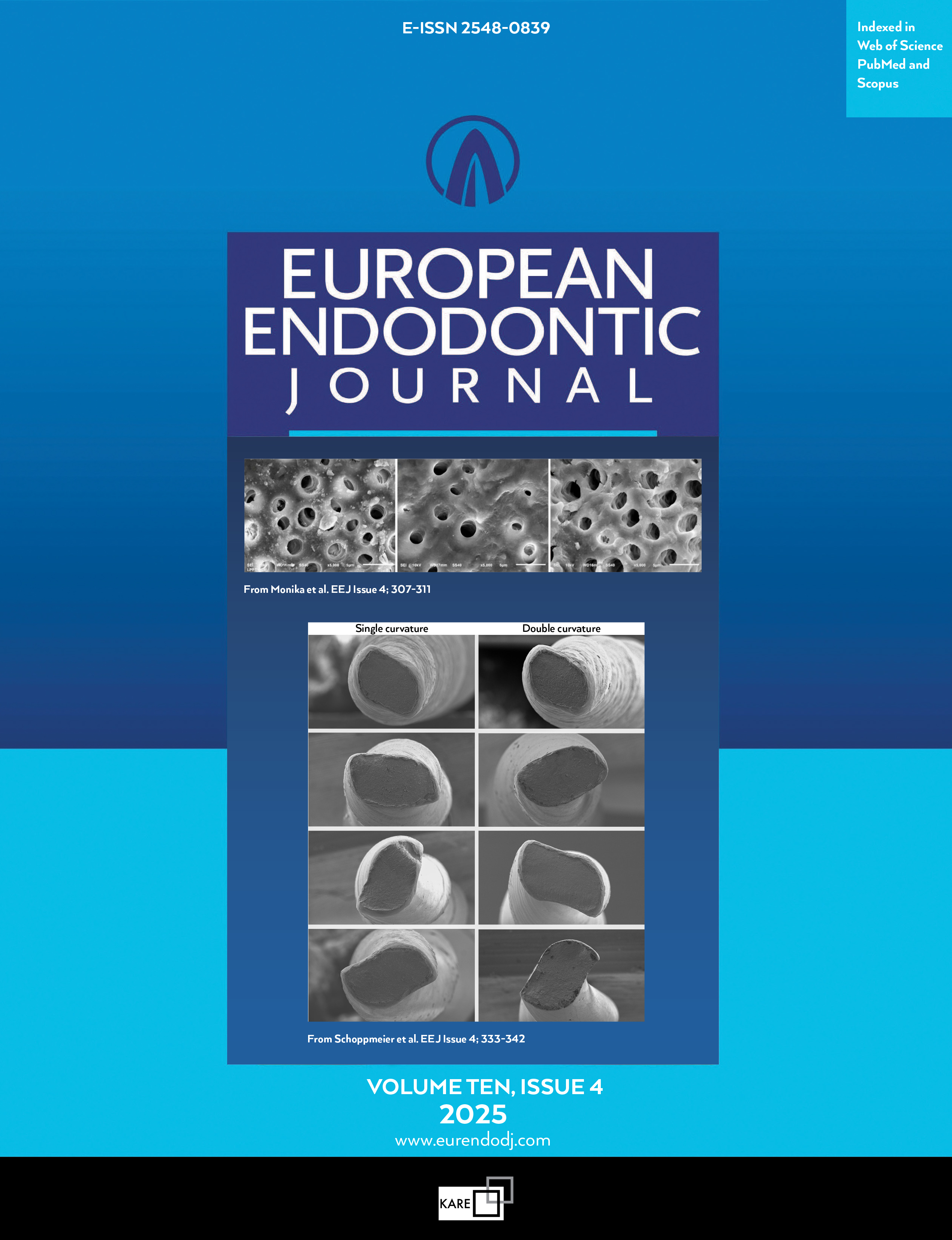Metrics
2024 IMPACT FACTOR
5 year Impact Factor
Eigenfactor Score
2024 CiteScore
Journal Citation Reports
(Clarivate 2025, JIF Rank)
Antimicrobial Effectiveness of High-Power Sonic and Ultrasonic Devices Combined with Stepwise Intraoperative or Final Activation of Sodium Hypochlorite
Flaviana Bombarda De Andrade1, Maricel Rosario Cardenas Cuellar1, Victor Feliz Pedrinha1, Márcia Sirlene Zardin Graeff2, Gianluca Plotino31Department of Operative Dentistry, Endodontics and Dental Materials, University of São Paulo, Bauru School of Dentistry, São Paulo, Brazil2Integrated Research Center, University of São Paulo, Bauru School of Dentistry, São Paulo, Brazil
3Private Practice, Grande Plotino and Torsello Studio di Odontoiatria, Rome, Italy
Objective: This study investigated the intratubular decontamination promoted by high-power sonic and ultrasonic devices using either a stepwise intraoperative activation (SIA) technique or a final conventional activation (CA) approach during root canal chemomechanical preparation.
Methods: Fifty human lower premolars were contaminated with Enterococcus faecalis and assigned into five groups (n=8): conventional syringe irrigation (CSI); final ultrasonic activation (FUA) using the ultrasonic insert 25/25 IRRI S; final sonic agitation (FSA) using the high-power sonic insert 20/28 Eddy system (both CA techniques); stepwise ultrasonic activation (SUA); and stepwise sonic agitation (SSA) using the same devices during and after canal preparation (SIA techniques). Remaining specimens served as controls. Root canal preparation was performed with the Reciproc system and 5.25% NaOCl, followed by final irrigation with 17% EDTA. Bacterial viability was assessed via confocal microscopy with Live/Dead technique. Statistical analysis was employed using non-parametric tests (α=0.05).
Results: SUA showed the lowest bacterial viability, followed by FSA, both statistically similar. SSA and FUA were similar but less effective than SUA and FSA (p<0.05). The CSI group had significantly higher bacterial viability compared to all other groups (p<0.05).
Conclusion: High-power sonic agitation and ultrasonic activation enhanced intratubular decontamination against E. faecalis. The SIA technique, using IRRI S or Eddy systems, effectively reduced bacterial viability and represents a promising approach for root canal disinfection. (EEJ-2024-11-185)
Manuscript Language: English
(291 downloaded)


